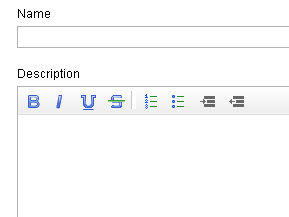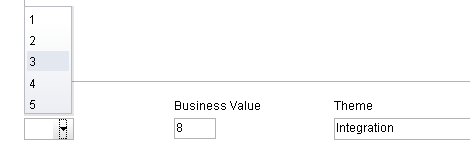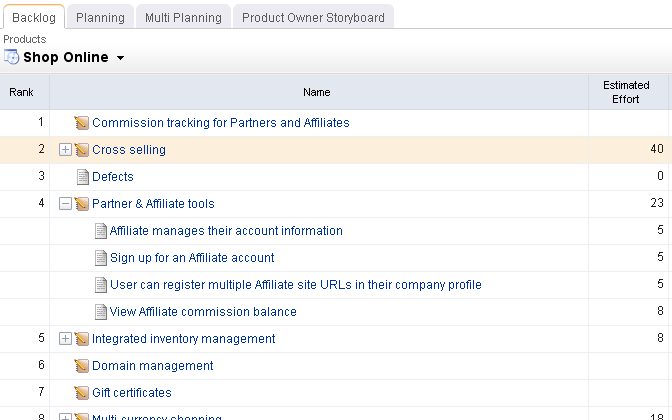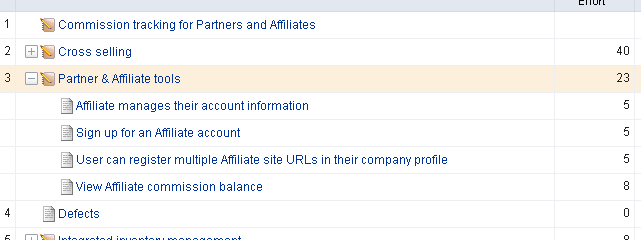Import work items
You can use the Import Data tab to download the template (a Microsoft Excel file) into which you can enter data about items, resources, resource roles, and resource teams, and then bulk import that data.
In the template, there is a tab for each of the types of data that you can import: Investments, Resource Roles, Resource Teams, Resources, and Agile Work Items. On each tab, a row represents a single item, resource role, resource team, or resource that will be imported.
This is a feature that can be a useful way to add data, especially during the configuration phase of your deployment. However, this feature, when used carelessly, can add a lot of unnecessary data into your environment. Permission to use this feature should be granted carefully and only to people who are capable of removing unwanted data, should it get imported.
- This is a feature that should not be viewed as a way to manage data on a day-to-day basis.
- The tabs are imported in the following order: Resource Teams, Resource Roles, Resources, and Investments. It can be easier to import data one tab at a time; if you import data one tab at a time, you should use the same order.
- Do not use characters in the template that are commonly used in Microsoft Excel as calculation indicators. For example, the ampersand symbol (&) may create a calculated cell and a calculated cell will fail upon import.
- You cannot have spaces in user names.
- Importing data should be done at times when there are no other users from your organization logged-in. The import process will fail when conflicts are caused by other work being done.
- There is no preview function.
Depending on the amount of information you want to import, and the complexity of that information, you may need more detailed help, including descriptions of each tab in the template and a description of the messages you may encounter while importing information. You can get this information by clicking Help while working in the Import Data tab. Sometimes, access to attribute details within Agile On Demand may be necessary, and that access may require the assistance of your Administrator.
Author stories
Agile On Demand offers intuitive, fast, and robust story authoring capabilities. Simply navigate to a backlog and click "Add" to enter in a new Epic or Story. You can continue adding items quickly by clicking "Save and Add Another" after every item.
- Select a backlog, choose
 Add, and select the work item type you wish to add.
Add, and select the work item type you wish to add.

- Enter the name and description for the work item.

Set the priority, business value, and theme.
- Select the Tracking tab to assign an owner and to specify estimated and actual hours.

- Select the Notes tab to enter any notes that may be needed for the work item or for the team member assigned to the work item.

- When you are finished, click OK to save this work item and close the dialog box. If you want to create another work item, click Save & Add Another.
Prioritize backlog
- A product backlog often requires prioritization of major features (sometimes called epics) at a high level.
- A release backlog may require breakdown and elaboration of stories so that actual effort and dependencies may be factored in.
- A sprint backlog may need to be re-prioritized due to changes in staffing, the discovery of a defect that needs to be fixed, and so on.
Regardless of how or when a work item is prioritized, Agile On Demand makes it easy for you to move work items between backlogs, adjust priorities, change the ranking order, and so on, so that you are using the most effective method for your team. When you are working in a backlog, be sure to set the view mode to ![]() List.
List.

Viewing a backlog in list view mode will ensure that you can view work items by relative priority (where a higher rank equals a higher priority). (By default, Agile On Demand shows backlogs in the ![]() Tree view mode, which does not rank stories.)
Tree view mode, which does not rank stories.)
- Select a backlog and click
 List.
List. - Choose the story you want to re-rank, select it (by holding down the mouse button), and then drag it to its new relative priority.

- When the work item is in the location you want it to be, de-select it (by releasing the mouse button). The backlog will refresh and the work items will have been re-ranked according to their new relative priority.
